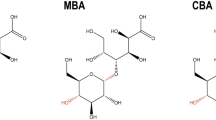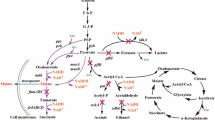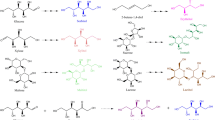Abstract
Maltotetraose (G4) consists of four glucose units linked by an α-1,4-glycosidic bond. This compound demonstrates remarkable versatility in food processing and exhibits specific physiological functions, suggesting promising applications in the medical, chemical, and food sectors. However, due to the closely related physical and chemical properties of maltotriose (G3), G4, and maltopentose (G5), achieving high-purity G4 has been challenging, resulting in a staggering price of US$438.88 per gram. In this study, a novel and efficient bio-physical method was developed to produce high-purity G4. Initially, multi-enzymatic hydrolysis yielded G4 at a 65.83% purity. Subsequent processes involving yeast fermentation and SMB separation further enhanced the purity to an impressive 93.15%. Notably, this pioneering method represents the successful separation of G3, G4, and G5 to exclusively obtain high-purity G4 from maltooligosaccharides, surpassing previous purity achievements. Every facet of this bio-physical method underwent meticulous design and optimization, ensuring a production process that is environmentally friendly, safe, and efficient. To validate its practicality, pilot-scale production tests were conducted. The cost analysis indicates that producing high-purity G4 through this method amounts to only US$0.013 per gram, representing that the actual selling price of G4 was 33,760 times the production cost under this process.





Similar content being viewed by others
Data availability
The data are available from the corresponding author on reasonable request.
References
Shinde VK, Vamkudoth KR. Maltooligosaccharide forming amylases and their applications in food and pharma industry. J Food Sci Technol. 2021;1–12. https://doi.org/10.1007/s13197-021-05262-7.
Bae W, Lee SH, Yoo SH, et al. Utilization of a maltotetraose-producing amylase as a whole wheat bread improver: dough rheology and baking performance. J Food Sci. 2014;79(8):E1535–E40. https://doi.org/10.1111/1750-3841.12538.
Soon YS, You JJ, Yeonjoong Y, et al. Inhibition of PDGF-induced migration and TNF-alpha-induced ICAM-1 expression by maltotetraose from bamboo stem extract (BSE) in mouse vascular smooth muscle cells. Mol Nutr Food Res. 2016;60(9):2086–97. https://doi.org/10.1002/mnfr.201500601.
Kondo H, Honke T, Hasegawa R, et al. Isolation of maltotetraose from Streptomyces as an antibiotic against Erwinia carotovora. J Antibiot. 1975;28(2):157–60. https://doi.org/10.7164/antibiotics.28.157.
Kimura T, Nakakuki T. Maltotetraose, a new saccharide of tertiary property. Starch/Staerke. 1990;42(4):151–57. https://doi.org/10.1002/star.19900420407.
Bláhová M, Štefuca V, Hronská H, et al. Maltooligosaccharides: properties, production and applications. Molecules. 2023;28(7):3281. https://doi.org/10.3390/molecules28073281.
Li J, Ban X, Gu Z, et al. Preparation and antibacterial activity of a novel maltotetraose product. Process Biochem. 2021;108:8–17. https://doi.org/10.1016/j.procbio.2021.05.018.
Maruo S, Yamamoto H, Toda M, et al. Enzymatic synthesis of high purity maltotetraose using moranoline (1-Deoxynojirimycin). J Agricultural Chem Soc Japan. 1993;57(3):499–501. https://doi.org/10.1271/bbb.57.499.
Ezure Y, Maruo S, Kojima M, et al. Manufacturing high purity maltose and maltotetraose from starch by a novel and efficient procedure named reducing end modification method. Biosci Biotechnol Biochem. 1997;61(11):1931–33. https://doi.org/10.1271/bbb.61.1931.
Li Y, Lü F, Xu Y, et al. Purification of Ulva lactuca functional oligosaccharides by yeast fermentation combined with enzyme. J Fujian Agric Forestry University(Natural Sci Edition). 2018;47(1):110–14.
Dasaesamoh R, Youravong W, Wichienchot S. Optimization on pectinase extraction and purification by yeast fermentation of oligosaccharides from dragon fruit (Hyloceus Undatus). Int Food Res J. 2016;23(6):2601–07.
Zhang Z, Jin T, Xie X, et al. Structure of maltotetraose-forming amylase from Pseudomonas saccharophila STB07 provides insights into its product specificity. Int J Biol Macromol. 2020;154:1303–13. https://doi.org/10.1016/j.ijbiomac.2019.11.006.
Duan K, Ban X, Wang Y, et al. Improving the product specificity of maltotetraose-forming amylase from Pseudomonas saccharophila STB07 by removing the carbohydrate-binding module. J Agric Food Chem. 2022;70(42):13709–18. https://doi.org/10.1021/acs.jafc.2c05580.
Thakur M, Sharma N, Rai AK, et al. A novel cold-active type I pullulanase from a hot-spring metagenome for effective debranching and production of resistant starch. Bioresour Technol. 2021;320:124288. https://doi.org/10.1016/j.biortech.2020.124288.
Bhat P, Pawaskar G-M, Raval R, et al. Expression of Bacillus licheniformis chitin deacetylase in E. Coli pLysS: sustainable production, purification and characterisation. Int J Biol Macromol. 2019;131:1008–13. https://doi.org/10.1016/j.ijbiomac.2019.03.144.
Phillips EO, Giovinazzi S, Menz SL, et al. Preparation of cell extracts by cryogrinding in an automated freezer mill. JoVE (Journal Visualized Experiments). 2021;167e61164. https://doi.org/10.3791/61164.
Imamoglu S. Simulated moving bed chromatography (SMB) for application in bioseparation. Mod Adv Chromatogr. 2002;211–31. https://doi.org/10.1007/3-540-45345-8_6.
Seidel-Morgenstern A, Kessler LC, Kaspereit M. New developments in simulated moving bed chromatography. Chem Eng Technology: Industrial Chemistry‐Plant Equipment‐Process Engineering‐Biotechnology. 2008;31(6):826–37. https://doi.org/10.1002/ceat.200800081.
Barber E, Houghton MJ, Visvanathan R, et al. Measuring key human carbohydrate digestive enzyme activities using high-performance anion-exchange chromatography with pulsed amperometric detection. Nat Protoc. 2022;17(12):2882–919. https://doi.org/10.1038/s41596-022-00736-0.
Maalej H, Ben Ayed H, Ghorbel-Bellaaj O et al. Production and biochemical characterization of a high maltotetraose (G4) producing amylase from Pseudomonas stutzeri AS22. BioMed research international. 2014;2014. https://doi.org/10.1155/2014/156438.
Matsumoto T, Makimoto S, Taniguchi Y. Effect of pressure on the mechanism of hydrolysis of maltotetraose, maltopentaose, and maltohexose catalyzed by porcine pancreatic α-amylase. Biochim et Biophys Acta (BBA)-Protein Struct Mol Enzymol. 1997;1343(2):243–50. https://doi.org/10.1021/jf970137h.
Quéméneur M, Bittel M, Trably E, et al. Effect of enzyme addition on fermentative hydrogen production from wheat straw. Int J Hydrogen Energy. 2012;37(14):10639–47. https://doi.org/10.1016/j.ijhydene.2012.04.083.
Ming Z. Research on the Production Technology of Maltotetraose. Journal Of Wuxi University Of Light Industry; 1999.
Adhiraj R, David JI, Hong CK, et al. Understanding the mechanism of glucose-induced relief of Rgt1-mediated repression in yeast. Febs Open Bio. 2014;4(1):105–11. https://doi.org/10.1016/j.fob.2013.12.004.
Zhang X. Glucose repression of the mal genes in the yeast Saccharomyces cerevisiae, Yeshiva University1996.
Stambuk B, Silva MD, Panek A, et al. Active α-glucoside transport in Saccharomyces cerevisiae. FEMS Microbiol Lett. 1999;170(1):105–. https://doi.org/10.1111/j.1574-6968.1999.tb13361.x. 10.
Jones RP, Greenfield PF. Effect of carbon dioxide on yeast growth and fermentation. Enzym Microb Technol. 1982;4(4):210–23. https://doi.org/10.1016/0141-0229(82)90034-5.
Zhao G, Chen Y, Carey L, et al. Cyclin-dependent kinase co-ordinates carbohydrate metabolism and cell cycle in S.cerevisiae. Mol Cell. 2016;62(4):546–57. https://doi.org/10.1016/j.molcel.2016.04.026.
Ming Z, Hong C, Jing S, et al. Inoculum size-dependent interactive regulation of metabolism and stress response of Saccharomyces cerevisiae revealed by comparative metabolomics. J Biotechnol. 2009;144(4):279–86. https://doi.org/10.1016/j.jbiotec.2009.09.020.
White J, Munns DJ. Influence of temperature on yeast growth and fermentation. J Inst Brew. 1951;57(4):280. https://doi.org/10.1002/j.2050-0416.1951.tb01628.x. – 84.
Lee C-g, Choi J-H, Park C, et al. Standing wave design and optimization of a simulated moving bed chromatography for separation of xylobiose and xylose under the constraints on product concentration and pressure drop. J Chromatogr A. 2017;1527:80–90. https://doi.org/10.1016/j.chroma.2017.10.067.
Author information
Authors and Affiliations
Contributions
Liyuan Jiang: Conceptualization, Investigation, Data curation, Writing – original draft. Haocun Kong: Methodology, Data curation. Xiaofeng Ban: Writing - review & editing. Zhengbiao Gu: Conceptualization, Methodology, Resources. Caiming Li: Resources, Supervision. Yue-E Sun: Writing - review & editing. Zhaofeng Li: Conceptualization, Methodology, Resources, Supervision.
Corresponding author
Additional information
Publisher’s Note
Springer Nature remains neutral with regard to jurisdictional claims in published maps and institutional affiliations.
Electronic supplementary material
Below is the link to the electronic supplementary material.
Rights and permissions
Springer Nature or its licensor (e.g. a society or other partner) holds exclusive rights to this article under a publishing agreement with the author(s) or other rightsholder(s); author self-archiving of the accepted manuscript version of this article is solely governed by the terms of such publishing agreement and applicable law.
About this article
Cite this article
Jiang, L., Kong, H., Ban, X. et al. Enhanced maltotetraose purity in industrial production by a sustainable bio-physical process. Syst Microbiol and Biomanuf (2024). https://doi.org/10.1007/s43393-024-00243-1
Received:
Revised:
Accepted:
Published:
DOI: https://doi.org/10.1007/s43393-024-00243-1




